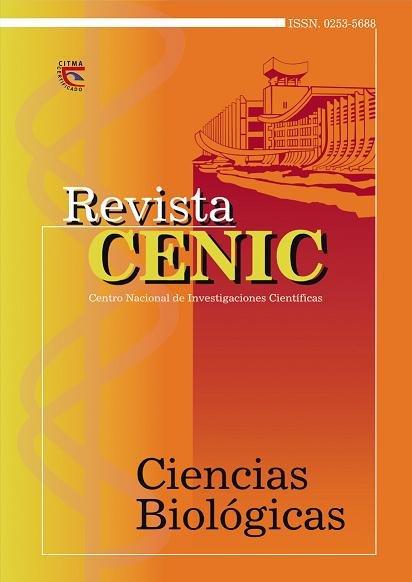Estudio complementario de la fecundidad y ciclo evolutivo de Corcyra cepholonica (Stainton) (Lepidoptera Galleriinaea), con vistas a su utilización en la cría artificial del Trichogramma (Hymenoptera, Trichogrammatidae)
Abstract
The fertility of the Corcyra cephalonica (Stainton) Moth increases significantly when rice powder is used as feeding material for the larvae, provided that temperature and relative humidity are maintained under optimal conditions, as was reported at the Conference of the Association of Cuban Sugar Cane Technicians (ATAC) (Torre, 197 a). It was also observed that the life cycle is shortened when rice powder to used. The index of development obtained by the use of this feeding material is higher than that obtained by the use of corn powder, as was reported at the same Conference (Torre, 197 b). It was noted that the duration of the life cycle is not affected by the amount of food available to the larvae, where as the size of the specimens, as well as the natality period, are indeed affected. It has been determined that the minimal amount of food- needed for. the complete development of this Moth is 0 .04 g.
Downloads

Downloads
Published
How to Cite
Issue
Section
License

This work is licensed under a Creative Commons Attribution-NonCommercial-ShareAlike 4.0 International License.
Los autores que publican en esta revista están de acuerdo con los siguientes términos:
Los autores conservan los derechos de autor y garantizan a la revista el derecho de ser la primera publicación del trabajo al igual que licenciado bajo una Creative Commons Atribución-NoComercial-CompartirIgual 4.0 Internacional que permite a otros compartir el trabajo con un reconocimiento de la autoría del trabajo y la publicación inicial en esta revista.
Los autores pueden establecer por separado acuerdos adicionales para la distribución no exclusiva de la versión de la obra publicada en la revista (por ejemplo, situarlo en un repositorio institucional o publicarlo en un libro), con un reconocimiento de su publicación inicial en esta revista.
Se permite y se anima a los autores a difundir sus trabajos electrónicamente (por ejemplo, en repositorios institucionales o en su propio sitio web) antes y durante el proceso de envío, ya que puede dar lugar a intercambios productivos, así como a una citación más temprana y mayor de los trabajos publicados (Véase The Effect of Open Access) (en inglés).














